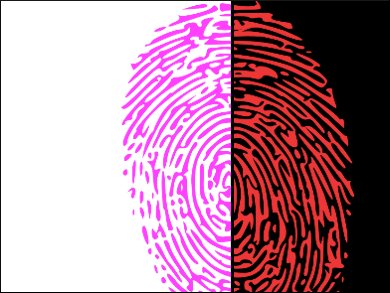Finding latent fingerprints and making them visible is one of the most common techniques in forensic science and is important to solving many crimes. There are a number of traditional techniques to develop latent fingerprints, including dusting them with powders and spraying them with reagents such as ninhydrin, which reacts with amino acids in the fingerprints to form a pink compound. However, there are drawbacks: while dusting, for example, the brushes used can damage the prints, and the colored product that forms with ninhydrin can be difficult to see on colored substrates.
Yang-Hsiang Chan, National Sun Yat-sen University, Kaohsiung, Taiwan, and colleagues have developed dual-readout polymer dots that allow both a colorimetric and a fluorescent detection of fingerprints. The team synthesized a near-infrared (NIR) fluorescent polymer by combining fluorene, 4,7-dibromo-2,1,3-benzothiadiazole, and 5,8-bis(5-
bromothiophen-2-yl)-2,3-bis(3-(hexyloxy)phenyl)quinoxaline using a Suzuki coupling reaction. Then a solution of the polymer was combined with ninhydrin and a surfactant and the resulting mixture was sonicated and injected into water to give ninhydrin-doped polymer dots.
The synthesized polymer dots can be sprayed onto surfaces to develop fingerprints without destroying their details. Under visible light, the ninhydrin causes its characteristic pink coloration. Under near-infrared illumination, the polymer dots show a bright red fluorescence. This dual approach allows the detection of prints on differently colored materials and on both porous and nonporous surfaces with high contrast and high resolution.
- Dual Colorimetric and Fluorescent Imaging of Latent Fingerprints on Both Porous and Nonporous Surfaces with Near-Infrared Fluorescent Semiconducting Polymer Dots,
You-Hong Chen, Shih-Yu Kuo, Wei-Kai Tsai, Chi-Shiang Ke, Chia-Hsien Liao, Chuan-Pin Chen, Yeng-Tseng Wang, Hsiu-Wei Chen, Yang-Hsiang Chan,
Anal. Chem. 2016.
DOI: 10.1021/acs.analchem.6b03178




